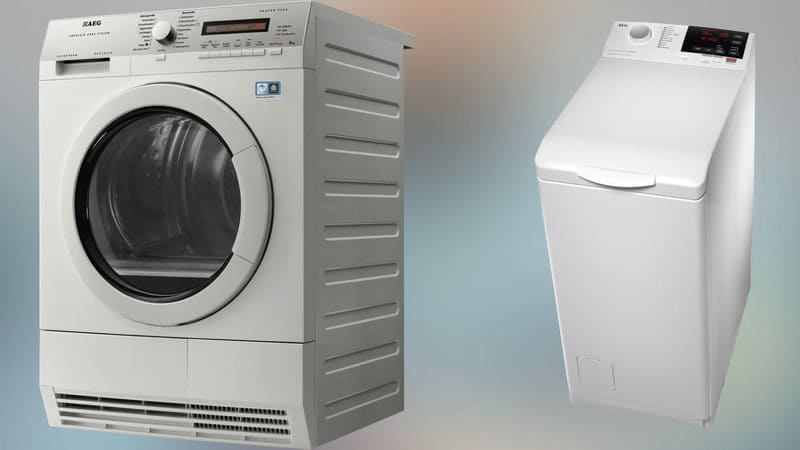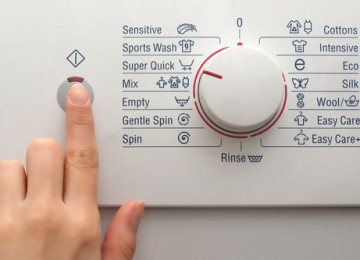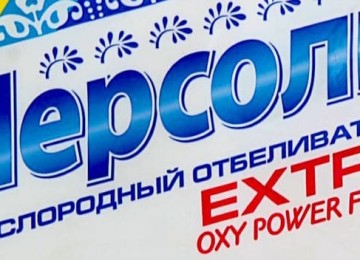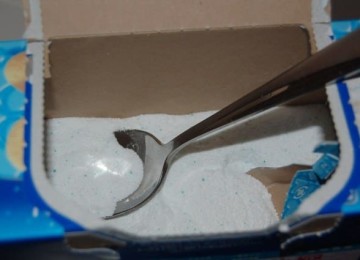Before purchasing equipment, it is important to understand the icons and characteristics accompanying each model. One of the most important indicators is the spin class of a washing machine. Most users do not attach much importance to this indicator, traditionally choosing a device with the highest rotation speed. However, the spin class can affect the quality and safety of things.
What is the spin class in a washing machine?
When selecting a new washing machine, you must first consider the technical characteristics of the potential model. An important indicator will be the spin class, which is assigned according to the degree of humidity of the washed laundry. Naturally, a high rotation speed will indicate the possibility of obtaining almost dry clothes.
However, a high spin class is beneficial for other reasons. Thanks to rotation at high speed, the device saves resources. After all, technology does a standard amount of work in an accelerated time. When buying a washing mashine, you should look at the registration certificate. The document indicates the maximum drum rotation speed and the spin class assigned to the model.
Principles of classification
Modern classification of devices according to the degree of spin is based on the speed of rotation of the drum. Typically this figure ranges from 800 to 1800 rpm. Spin efficiency depends on the degree of moisture in the clothes.
The drier the laundry after washing, the better and more efficient the process.
Calculations are made as follows:
- Linen that has been spun must be weighed.
- Weighing must be repeated after the drying process.
- Now, from the value obtained after weighing the wet laundry, you need to subtract the weight of the dry laundry.
- The resulting figure must be divided by the weight of the dried clothes.
- The total value must be multiplied by 100%.
Using an example, the calculation looks like this: the weight of wet laundry is 5 kg, after drying it decreases to 3 kg. After subtracting the first value from the second, the result is 2 kg. We divide this figure by 3 and multiply by 100%. The final value is 66%.
The European spin quality standard has received the greatest recognition. Its standards and designations are supported throughout the world. The standard is based on the Latin alphabet, using letters from “A” to “G”. The most effective spin is indicated by the first letter of the alphabet, and the weakest by the last.
Decoding of the classification
The letter designations adopted for the spin characteristics allow you to obtain information about the speed of the drum. The best quality will be found in the most powerful, high-class machines.
G
Today, class “G” exists only formally, since devices with such a spin are no longer produced. Their production has been discontinued due to low efficiency. The volume of retained moisture after spinning can reach 90%. This result is explained by the low rotation speed of the drum - 400 rpm.
F
Another class that already exists only on paper is “F”. They provide a slightly higher spin rate than the “G” level models. So, the improvement was about 10%. However, the quality of such a spin remains unacceptable for the modern user. After all, laundry retains up to 80% of its original moisture. These results are explained by the low rotation speed of the drum - only 600 rpm.
E
Class “E”, unlike the previous ones, is actively used in modern production. Models belonging to this category are often budget ones. After all, class “E” is now considered the least effective of those used. Rotating the drum at a speed of 800 rpm allows you to remove up to 25% of moisture.
D
Another class often found among budget products is “D”. Thanks to the rotation speed increased to 1000 rpm, the laundry loses up to 30% of moisture after washing. This result is already acceptable for most users.
C
Models marked with class “C” can perform up to 1200 rpm. Most models on the market have this particular spin category. After all, it allows you to remove up to 40% of moisture, which makes things noticeably dry.
B
The second most effective class is “B”; it removes 45% of moisture from things. A device from this spin category allows you to dry clothes by almost half. This is achieved by increasing the number of revolutions the drum can make per minute. Thus, compared to the previous class, the speed has been increased from 1200 to 1400 rpm. As a result, the time allotted for drying is significantly reduced.
A
The highest quality spin can be obtained from a model classified under class A.After the cycle, things retain no more than 43% moisture, which is considered the best result for modern technology. A similar level of spin is achieved by increasing the drum rotation speed to 1800 rpm.
Which spin class is better to choose?
Class A models should be purchased by people for whom physical activity is contraindicated. After all, you have to wash quite bulky and heavy things from time to time.
Poor spinning can increase their weight, complicating the process of unloading and drying. However, high-end appliances can cost a decent amount of money, making them unaffordable for the average family.
In addition, washing at high speed can damage the fabric. Silk or woolen clothing may be damaged after a cycle. After all, due to the strong rotation of the drum, the threads wear out and become too thin. They lose color, which greatly deteriorates the appearance of the clothes. A high spin speed also affects the formation of wrinkles; there are more of them. As a result, ironing and steaming time increases.
In practice, most users will not be able to distinguish between a product after a spin of 1000 and 1600 rpm. The difference becomes obvious only when washing clothes made of thick fabric. The expectations of most users will be fully met by equipment of class D or C. The spin will take place at a sufficient speed to rid the laundry of excess moisture without damaging it.
Other criteria for choosing a washing machine
When choosing, you should take into account other criteria:
- a method of putting things into a drum;
- product dimensions;
- washing programs;
- additional functions.
Based on the loading method, devices are divided into frontal and vertical. The first type is the most popular; similar models are available from every manufacturer. This type of device is equipped with a door on the front panel. It is made of transparent material through which you can observe the cleansing process.
The first type is the most popular; similar models are available from every manufacturer. This type of device is equipped with a door on the front panel. It is made of transparent material through which you can observe the cleansing process.
The second type is less popular, but much more convenient to use. In this case, the door is located on the top panel. Convenience for users lies in the easy way to put things into the drum, since there is no need to bend over to load. Despite the obvious advantage, vertical models are considered slightly outdated.
The dimensions of the equipment play a big role in its placement. Therefore, at the first stage it is necessary to select a site for installing the device. If a suitable area is found under the sink, then you should prefer the front model. Manufacturers produce similar devices with different widths, heights and depths. There are compact products that can easily fit into small spaces.
If the suitable area is located in the hallway or bathroom, then it is better to choose a model with vertical loading. These types of appliances often have a very narrow width, making them easy to fit into tight corners. In addition, they can be installed with either side to the wall. After all, things are loaded through the door located on top. Vertical models do not require free space in front of the front panel to insert the drum.
Modern appliances are equipped with a large number of washing programs and additional functions. However, their presence affects the cost of the device. Therefore, it is necessary to decide in advance on the preferred functionality.For example, gardeners and outdoor enthusiasts will benefit from biowashing. The program allows you to cleanse dirt remaining from grass, soil, berry juice or blood.
An important feature that you need to make sure is available before purchasing is protection against leaks. It can be partial or complete. The second option is preferable, as it is more reliable and reduces the risk of flooding. A device with such protection is equipped with special inlet hoses. If there are leaks, the system transmits impulses to valves, which instantly shut off the water supply.
In the first case, the devices are equipped only with trays with float protection. If there is an internal leak, water enters the container. Its accumulation will register a float, which will transmit a signal to the system. As a result, the equipment will turn on the pump, which will begin pumping out water.
Tips for choosing washing equipment
Experts have prepared several tips to simplify the selection of equipment:
- When purchasing, you need to pay attention to the company and place of assembly. It is better to choose certified products from well-known brands. Traditionally, equipment from German, Korean and Italian companies is of high quality.
Ideally, the assembly was carried out in the homeland of the brand. Now many manufacturers are moving factories to other countries, which has a negative impact on their products. Unfortunately, devices assembled or produced in Chinese factories are much worse in quality. - It is necessary to look at the energy efficiency class. Sometimes models with a similar set of functions and spin speeds differ in electricity consumption. The best choice is the model marked A+++.Such a device will consume a minimal amount of energy.
- Top-loading models tend to be noisier than front-loading models. This is explained by the design features; such devices can often move during spinning. If quiet operation of the device is an important indicator, it is better to purchase equipment with front-facing storage.
Conclusion
A high spin class allows you to get almost dry laundry after washing, which will reduce drying time. However, such models have a high cost. Therefore, it is worth purchasing a device labeled class A or B for elderly relatives.
It will be easier for them to unload and hang up well-wrung laundry, especially if it is made of thick fabric. This option is also convenient for people for whom physical activity is contraindicated. For the needs of the average user, a class D or C machine is quite suitable.









